About

My wife and I, enjoying the scenery in Aruba.
I grew up in the river town of Hannibal, MO, before heading to the other side of the state to receive a Bachelor's in Physics and Math at William Jewell. I then received a Master's in Applied Physics from Southern Illinois University, and a PhD in Astronomy from the University of North Carolina.
As a graduate student at UNC, I worked with Nick Law to confirm and characterize planets discovered with the Kepler spacecraft using Robo-AO, the first robotic adaptive optics instrument.
I then began a Postdoctoral Fellow at the Dunlap Institute at the University of Toronto. At UofT, I led a survey that performed high-angular resolution follow ups with robotic instruments that led to the confirmation of dozaens of TESS planets.
I am currently an Assistant Professor in Astronomy at Stephen F. Austin State University. I am also the Directory of the SFA Observatory.
Planets around binary stars

SOAR TESS survey
I am PI for the SOAR speckle survey of TESS planet candidate hosts. This survey has observed over a thousand targets in high-angular resolution. Approximately a fifth of these systems have close binary companions, however, we find far fewer stellar systems at Solar System scale separations than would be expected from field statistics. This is likely due to the nearby star disrupting the formation and evolution of planets in these systems. Overall, we estimate approximately a quarter of solar-type stars in the galaxy can not host planets due to stellar multiplicity. Tentative results from this survey suggest M-dwarf planets hosts have similar close binary suppression. The exact physical mechanisms at play are not understood, but studying the properties of planets that do exist in these tight systems may provide clues. Continuing monitoring of these systems is underway to obtain orbital solutions for the stellar pairs.
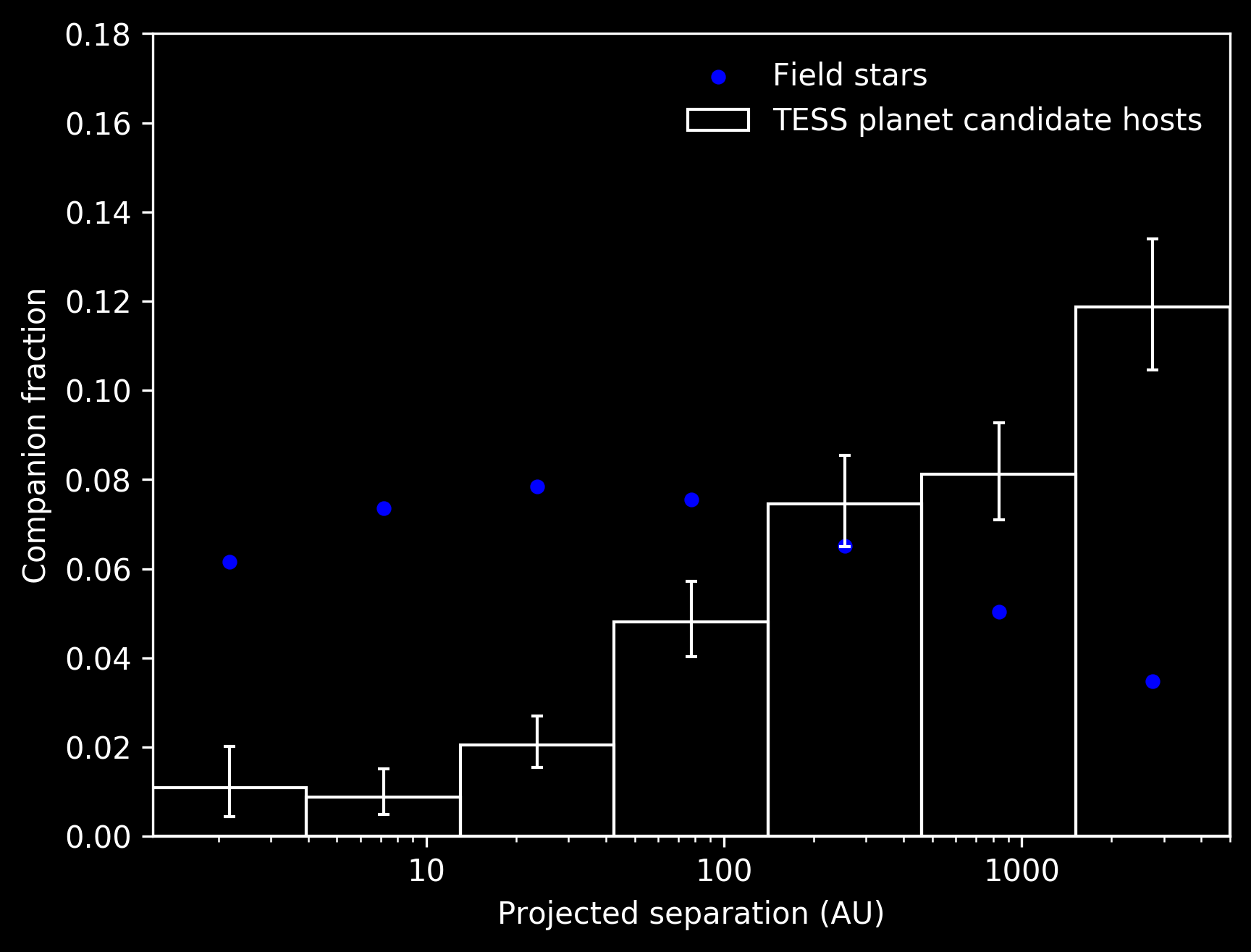 SOAR TESS Survey. I. Sculpting of TESS Planetary Systems by Stellar Companions
SOAR TESS Survey. I. Sculpting of TESS Planetary Systems by Stellar Companions
Kepler survey
The thousands of planetary candidates discovered by Kepler need follow-up high-resolution observations: with relatively poor spatial resolution, Kepler is vulnerable to nearby stars contaminating the photometry of the planetary host star or astrophysical false positives. Collaborators and I have used Robo-AO to observe every Kepler planetary candidate (see the results here). More than half of Kepler planetary candidates have only been imaged in high-resolution by Robo-AO. The presence or absence of a nearby star, as determined in the survey, has been integral in the confirmation of over 1500 planets from Kepler and the K2 mission (e.g., Morton et al. 2016, Crossfield et al. 2016) and revised radius estimates for over 600 planets, including ~100 rocky planets. We also use this unprecedented dataset to search for insight into the effect multiple star systems have on planetary formation and evolution.
TESS is expected to find thousands of nearby exoplanets over the next few years. Robo-AO has proven that it can uniquely observe each of the exoplanet systems in the North. With Robo-AO and the forthcoming Robo-AO-2 on Maunakea, I will focus on the estimated 500 rocky planets that TESS will discover (Sullivan et al. 2015).
One Hit Wonders
TESS is observing most of the sky for only 27 days, and detected hundreds of single-transit planets. These planets are relatively long period, meaning they are also cool(-ish), closer in temperature to Earth compared to most TESS planets. Many also orbit bright stars (T<12), making them excellent targets for atmospheric characterization. Studying these planets may be allow us to better understand what it is like on temperate planets, and put the atmopsheres of planets in our own solar system in context.
With only a single transit, however, these planets are hard to confirm. The One Hit Wonders survey uses a 0.5-m telescope to detect the additional transits from these planets that can be used to recover these planets. The survey has been operating since September 2019 in the dark skies of New Mexico.
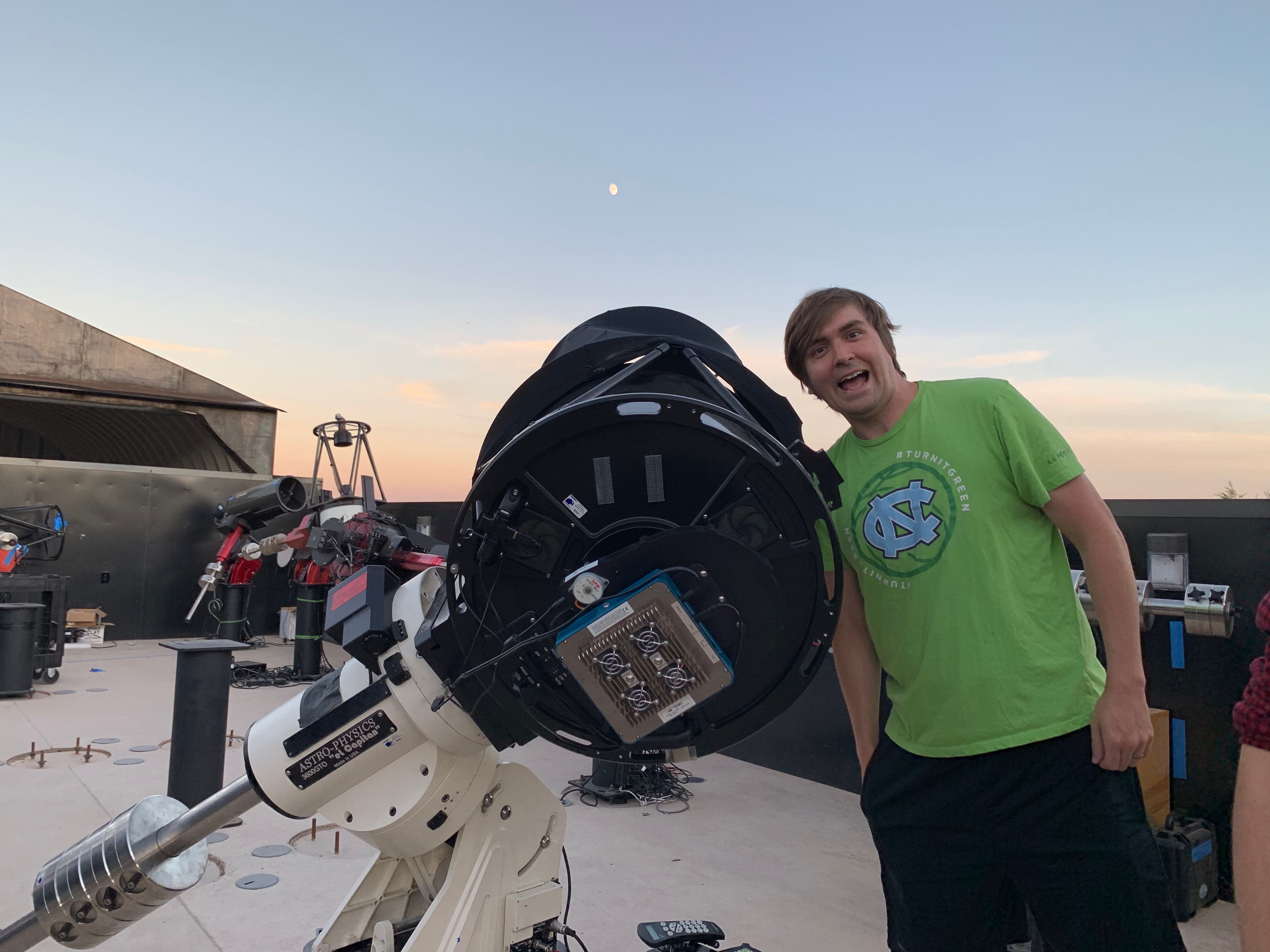 One Hit Wonders survey
One Hit Wonders survey
Robo-SOAR
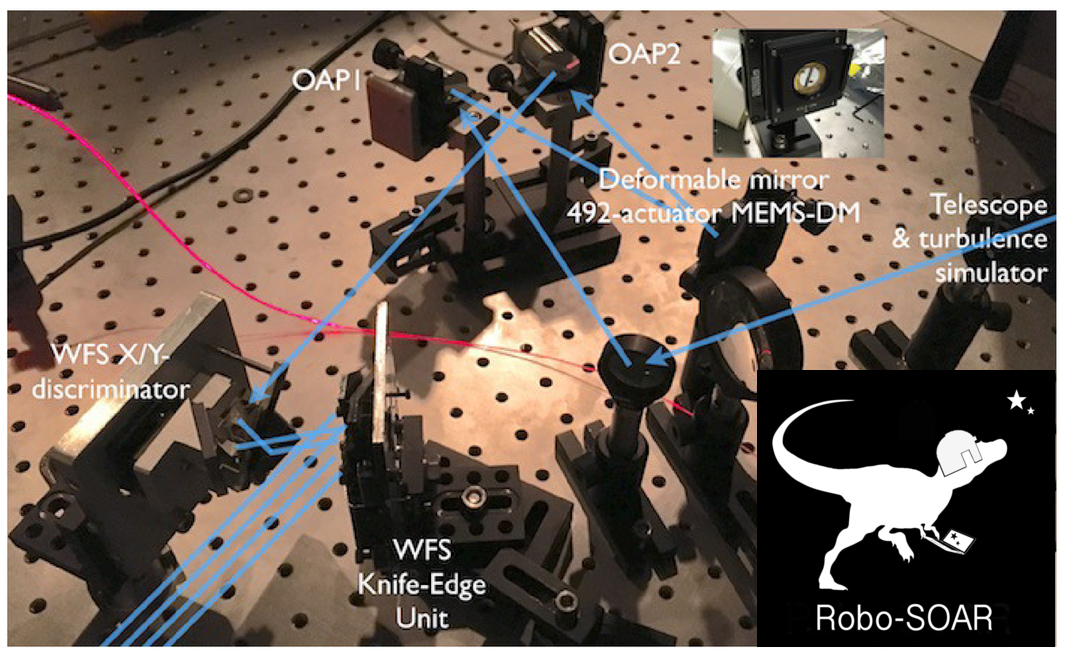
I designed and built the testbed for Robo-SOAR, a natural guide star adaptive optics (NGS-AO) analog to Robo-AO for the 4-m class SOAR telescope. A large impediment to NGS-AO systems is lack of sky coverage due to few sufficiently bright guide stars, needed to measure the incoming waveform aberrations. Use of pyramid wavefront sensors improves coverage substantially compared to Shack-Hartmann sensors, however production of the custom optics is prohibitively expensive for most telescopes (sub-8m aperture). A novel reflective design I am developing with Andrei Tokovinin costs orders of magnitude less and delivers similar performance. With this inexpensive design and the proven and highly-adaptable Robo-AO software, a sub-$100k adaptive optics system is possible on a wide-range of telescopes.
Space-like photometry
from the ground

TESS is targeting transiting planets around bright stars (on average, several magnitudes brighter than Kepler host stars), and follow-up transit observations will be possible for meter-class telescopes. The majority of the sky will be observed by TESS for 27 days, and for many planets only two transits will be detected, lacking the third transit required for confirmation. With small-telescopes, I will work to observe the critical third transit needed to confirm these planets (potentially hundreds if automated). During observations of planetary transits with the SOAR telescope using conjugate plane photometry (Osborn et al. 2011), I have achieved photometric precision similar to space-based telescopes (lightcurve above) and comparable to the best ground-based photometry performed (e.g., Stefansson 2013). This precision allows detection of stellar features in the transit, such as sunspots and faculae, indicative of stellar activity which impacts habitability. On this target (V=12, typical of a planetary host star TESS will discover), longer bins would allow detection of Earth-size planet transits.
My little astronauts, Caroline and Samantha
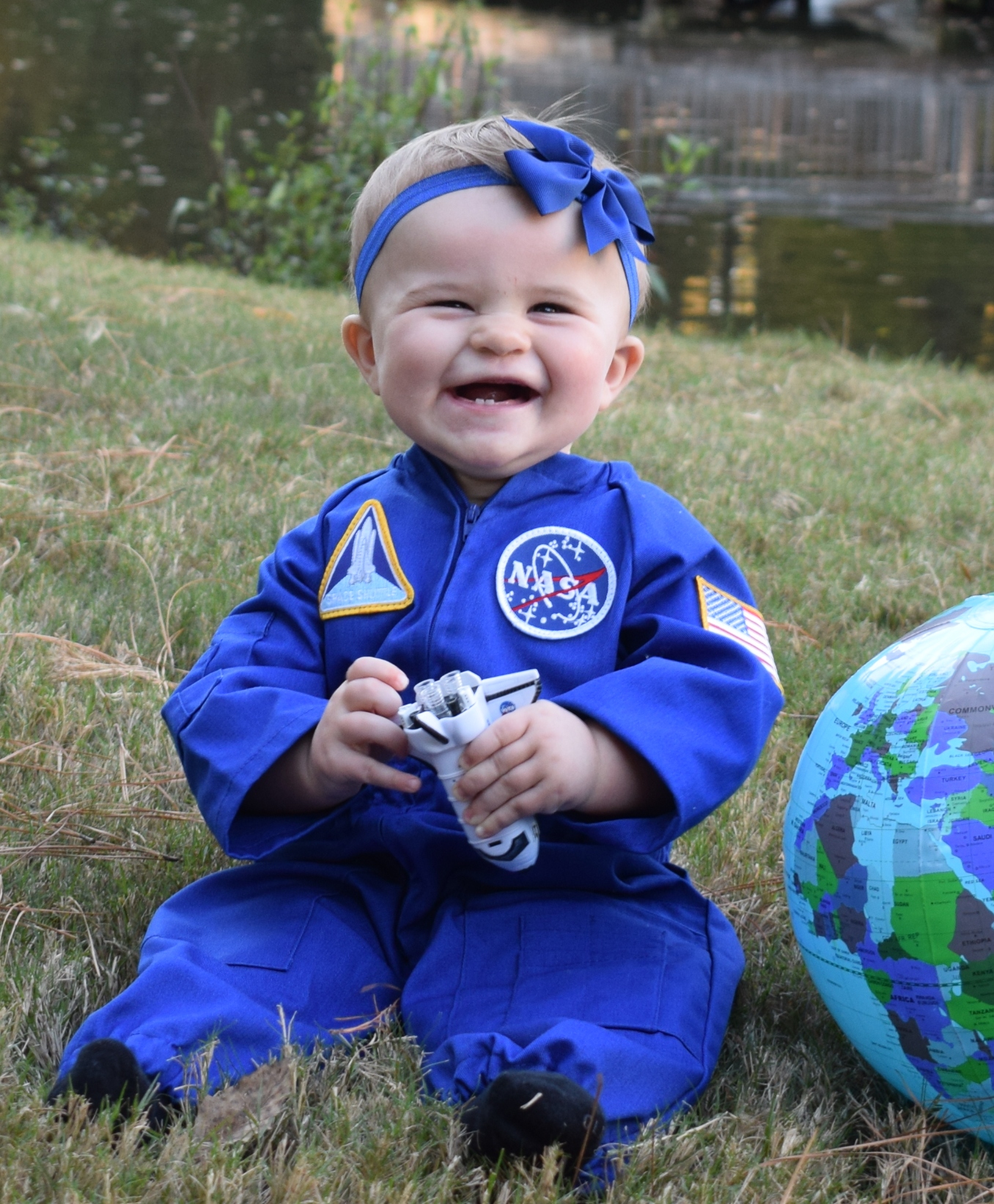
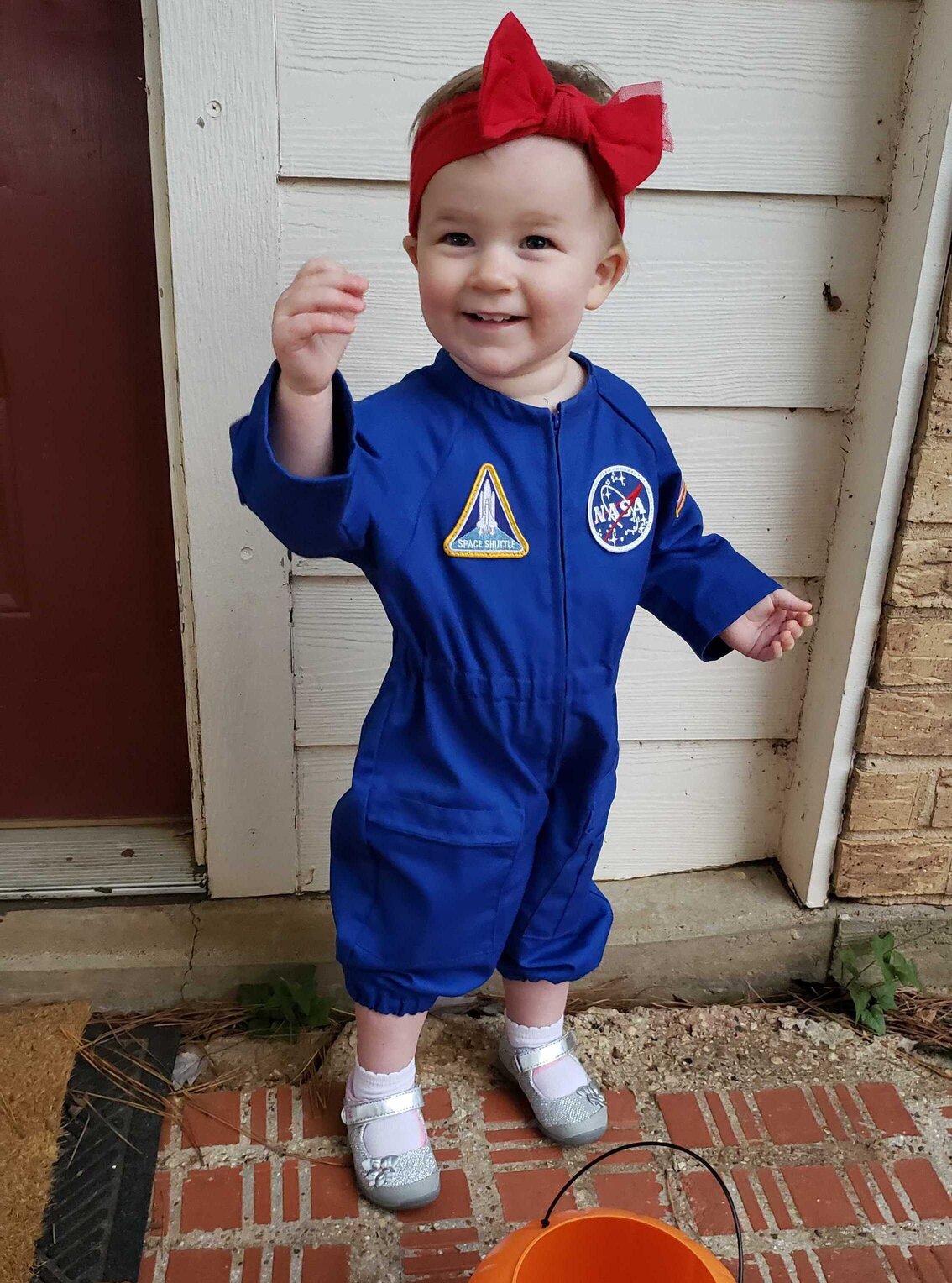
Contact
- Email: Carl.Ziegler (around) sfasu (dot) edu
Mailing address:
Carl Ziegler
Department of Physics, Engineering and Astronomy
1936 North Street
Nacogdoches, TX 75962
Elements
Text
This is bold and this is strong. This is italic and this is emphasized.
This is superscript text and this is subscript text.
This is underlined and this is code: for (;;) { ... }. Finally, this is a link.
Heading Level 2
Heading Level 3
Heading Level 4
Heading Level 5
Heading Level 6
Blockquote
Fringilla nisl. Donec accumsan interdum nisi, quis tincidunt felis sagittis eget tempus euismod. Vestibulum ante ipsum primis in faucibus vestibulum. Blandit adipiscing eu felis iaculis volutpat ac adipiscing accumsan faucibus. Vestibulum ante ipsum primis in faucibus lorem ipsum dolor sit amet nullam adipiscing eu felis.
Preformatted
i = 0;
while (!deck.isInOrder()) {
print 'Iteration ' + i;
deck.shuffle();
i++;
}
print 'It took ' + i + ' iterations to sort the deck.';
Lists
Unordered
- Dolor pulvinar etiam.
- Sagittis adipiscing.
- Felis enim feugiat.
Alternate
- Dolor pulvinar etiam.
- Sagittis adipiscing.
- Felis enim feugiat.
Ordered
- Dolor pulvinar etiam.
- Etiam vel felis viverra.
- Felis enim feugiat.
- Dolor pulvinar etiam.
- Etiam vel felis lorem.
- Felis enim et feugiat.
Icons
Actions
Table
Default
| Name |
Description |
Price |
| Item One |
Ante turpis integer aliquet porttitor. |
29.99 |
| Item Two |
Vis ac commodo adipiscing arcu aliquet. |
19.99 |
| Item Three |
Morbi faucibus arcu accumsan lorem. |
29.99 |
| Item Four |
Vitae integer tempus condimentum. |
19.99 |
| Item Five |
Ante turpis integer aliquet porttitor. |
29.99 |
|
100.00 |
Alternate
| Name |
Description |
Price |
| Item One |
Ante turpis integer aliquet porttitor. |
29.99 |
| Item Two |
Vis ac commodo adipiscing arcu aliquet. |
19.99 |
| Item Three |
Morbi faucibus arcu accumsan lorem. |
29.99 |
| Item Four |
Vitae integer tempus condimentum. |
19.99 |
| Item Five |
Ante turpis integer aliquet porttitor. |
29.99 |
|
100.00 |







